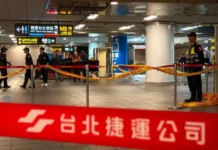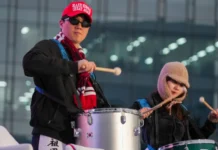(Reuters) – U.S. President Donald Trump will test his deal-making prowess in a region battered by his hardball trade policies on a trip to Asia next week, as doubts hang over his highly anticipated meeting with China’s Xi Jinping.
Trump, who leaves Washington on Friday night, is set for a five-day trip spanning Malaysia, Japan and South Korea, his first to the region and his longest journey abroad since taking office in January.
The Republican leader hopes to pile up trade, business and ceasefire deals before turning to the toughest challenge, a face-to-face with Xi on Thursday in South Korea.
The trip comes as Trump works to maintain the signature foreign policy achievement of his second term, a fragile ceasefire he helped strike in the Israel-Gaza conflict, while the Russian war in Ukraine rages and a trade war with China shows little sign of abating.
Washington and Beijing have hiked tariffs on each other’s exports and threatened to cut off critical minerals and technologies altogether, putting markets on edge.
The trip was formally announced by the White House on Thursday and details remain in flux, including the meeting between leaders of the world’s two largest economies.
Neither side expects a breakthrough that would restore terms of trade that existed before Trump’s second-term inauguration in January, according to a person familiar with the conversations. Instead, talks between the two sides to prepare for the meeting focused on managing disagreements and modest improvements.
An interim agreement could include limited relief on tariffs, an extension of current rates or China committing to buy U.S.-made soybeans and Boeing (BA.N), opens new tab airplanes. Beijing reneged on similar promises in a 2020 deal with Trump.
Washington could let more high-end computer chips flow to Beijing, which in turn could loosen controls on rare earth magnets that have angered Trump.
Or, nothing could come of the talks at all.
On Wednesday, U.S. Treasury Secretary Scott Bessent said the Trump-Xi talk would be a “pull-aside,” suggesting nothing formal. Trump later told reporters the two would have “a pretty long meeting,” allowing them to “work out a lot of our questions and our doubts and our tremendous assets together.”
China has not confirmed a meeting is planned.
TRUMP SET TO VISIT THREE COUNTRIES, MEET WORLD LEADERS
Mira Rapp-Hooper, a visiting fellow at the Brookings Institution and former Biden administration official, said Trump’s Asia policy has been defined by intense pressure on countries’ trade policies and defense spending.
“The high-level question on this trip is really, who does the United States stand with, and what does it stand for,” she said.
Trump is expected at the Association of Southeast Asian Nations summit, which starts on Sunday in Kuala Lumpur, Malaysia.
There, he could oversee the signing of a ceasefire deal between Thailand and Cambodia. The deal would formalize an agreement that ended the worst fighting in years between the two countries in July, though it falls short of a comprehensive peace deal. During his second term in office, Trump has branded himself as a global peacemaker.
After that stop, Trump will head to Japan to meet Sanae Takaichi, the newly elected prime minister. Takaichi is expected to affirm plans by her predecessor to hike military spending and to make $550 billion in Trump-directed investments in the U.S.
Then, in South Korea, Trump plans to meet Xi ahead of an international trade summit. Trump is set to return to Washington before the Asia-Pacific Economic Cooperation leaders’ forum gets underway, according to the schedule announced by the White House on Thursday.
Trump has threatened to raise tariffs on Chinese imports to a total of some 155% from November 1 if they can’t strike a deal, a move that would almost certainly provoke a reaction from Beijing and end a truce that paused tit-for-tat hikes.
Beyond trade, the two leaders are expected to discuss Taiwan, a long-running U.S.-China irritant, and Russia, a Chinese ally now subject to expanded U.S. sanctions over the war in Ukraine.
DEAL OR NO DEAL
Besides China, Trump is trying to close trade deals with Canada, Malaysia and India, while repairing issues with one already struck with South Korea.
U.S. and South Korean relations have been strained by Seoul’s concerns over the $350 billion investment in U.S. companies sought by Trump and deportations of the country’s foreign workers.
South Korean President Lee Jae Myung wants Trump to pursue peace with North Korea’s Kim Jong Un. U.S. officials considered, but never confirmed, a trip to the demilitarized zone (DMZ) separating the two Koreas, according to another person familiar with the discussions.



















